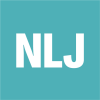A Historical Legacy Untouched by Time and Space? The Hollowing-out of the Norwegian Model of Industrial Relations
DOI:
https://doi.org/10.19154/njwls.v6i1.4907Keywords:
Labor market institutions & social partnersAbstract
The Norwegian model of industrial relations has received a lot of praise. It is generally thought of as the pinnacle of the welfare state, a reason why Norway is not severely hit by crises, is highly adaptable, and thus still going strong. This article discusses the historical circumstances in which the model arose with a view to analyze the preconditions for its further existence, arguing that the model must be understood as consisting of, and thus dependent upon, shifting historical subjects. This calls for an analysis of the concrete interactions between various agents, and how it has changed over time and space. In this effort, historical accounts are combined with theories developed within the social sciences in order to explain the dynamics of these interactions. We will argue that the contemporary notion of a Norwegian model of industrial relations, and the accompanying praise, is an ahistorical conceptualization verging on a dogma, and that profound reconfigurations of power relations between the agents of labor and capital need to be taken into account.Downloads
Published
How to Cite
Issue
Section
License
The Copyright Holder of this Journal is the authors and the Journal. Normally the journal use the CC-BY NC-ND 4.0 licence.
Exceptions to the license terms may be granted
If you want to use content in the Journal in another way then described by this license, you must contact the licensor and ask for permission. Contact Annica Asp at annica.asp@kau.se. Exceptions are always given for specific purposes and specific content only.
Sherpa/Romeo
The Journal is listed as a blue journal in Sherpa/Romeo, meaning that the author can archive post-print ((ie final draft post-refereeing) and author can archive publisher's version/PDF.
Copyright of others
Authors are responsible for obtaining permission from copyright holders for reproducing any illustrations, tables, figures or lengthy quotations previously published elsewhere.
Archives policy
All published material is archived at the Danish Royal Library in conformity with the Danish rules of legal deposit.
Plagiarism screening
We do not screen articles for plagiarism. It is the responsibility of the authors to make sure they do not plagiate.





